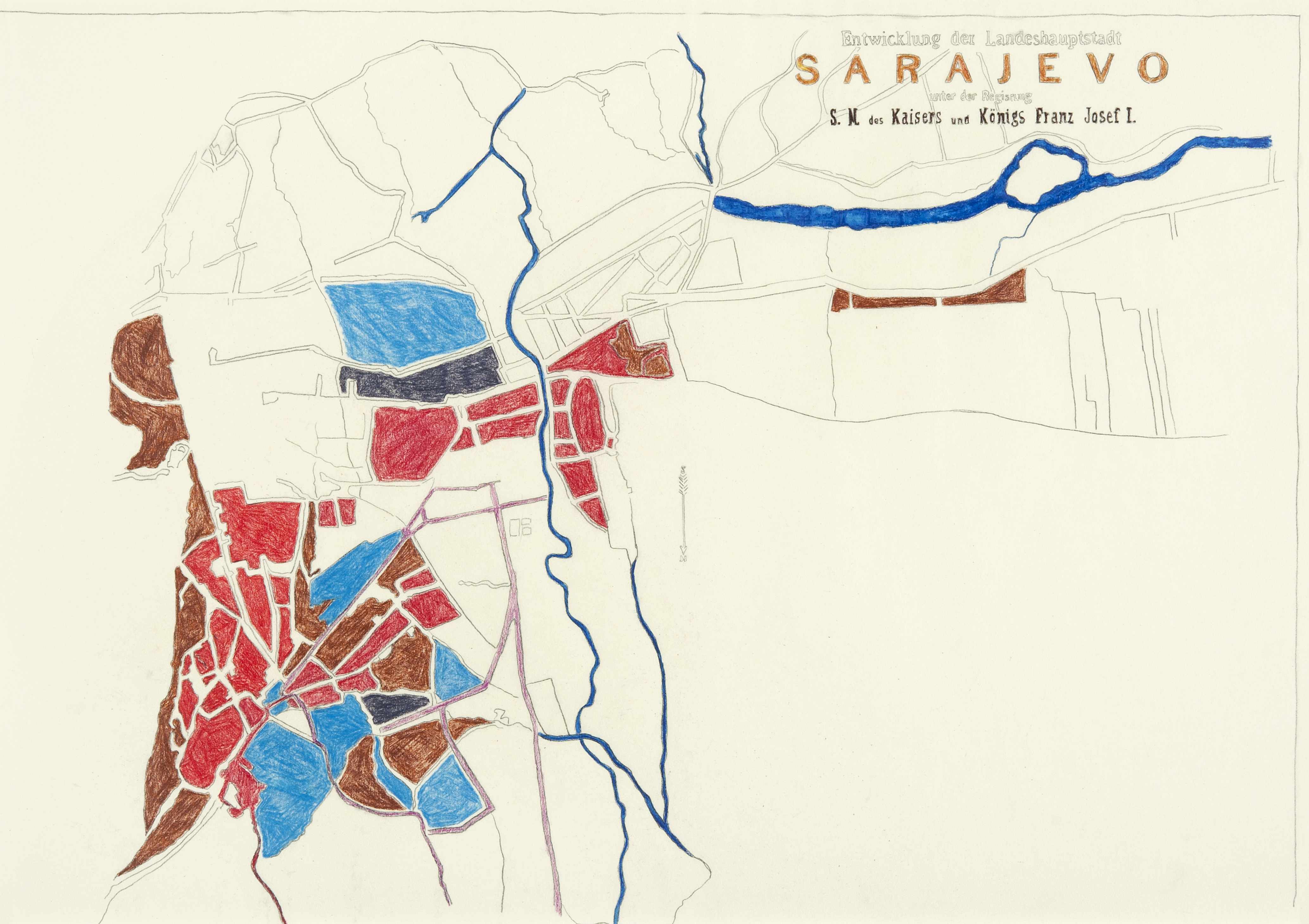
The ‘Imaginary Sarajevo’ exhibition project consists of drawings inspired by historical documents, principally city maps, found during research conducted at the Historical Archive Sarajevo in 2014. The drawings are partially based on archival material. They are a continuation of earlier series titled ‘New Past’ dedicated to the turbulent relation of former SFRY republics engaged with the remembrance of WWII. For some three years, I conducted extensive research on the implication of politics of memory and identity on visual arts, and the impact of transmission of memory or, to be more precise, what Marianne Hirsch terms postmemory. My interest in the topic emerged during doctoral studies, conducted independently of my art practice and professional engagement at the Academy of Fine Arts in Sarajevo.
Today, through the development of drawings on fragments of original maps of the city of Sarajevo, principally those dating from the Austro-Hungarian rule in Bosnia and Herzegovina (1878-1918), I recreate an alternative topography of the city. It’s past makes Sarajevo infamously popular worldwide. In 2014 the city commemorated the 100th anniversary of the assassination of the Archduke Francis Ferdinand that triggered, among other things, the Great War. Second World War, occupation, collaboration and finally the victory of the antifascist struggle left their imprint not only on the city but also on the social fabric of the whole Yugoslav region. The period of the siege (1992-1996), as the tragedy that is closest to us in time, represents another breaking point in our shared history additionally imprinted with painful memories. The omnipresence of the past transforms it into an endless, repetitive pattern.
Moving from a factual and descriptive representation of Sarajevo and its inhabitants, I am trying to access the fictional, dreamlike, Sarajevo whose layers, I believe, exist closely to the physical body of the city. Through the foothills, the curves of the streets of the old town, and the river that traverses the city, the topography gradually transforms into cell-like forms. The peeling-off the multiple layers that are covering the surface uncover what has been hidden underneath. The paths to another Sarajevo appear. The removal of surfaces, acting as layers of skin, or paper as in this case, enable us to closely look at the imaginary Sarajevo.
Bio
Born in Sarajevo (1980), Jasmina grew up in Kinshasa (Zaïre/Democratic Republic of Congo) and Brussels. Studied in Sarajevo, Okinawa, Turin and Belgrade. She lives and works in Sarajevo.
